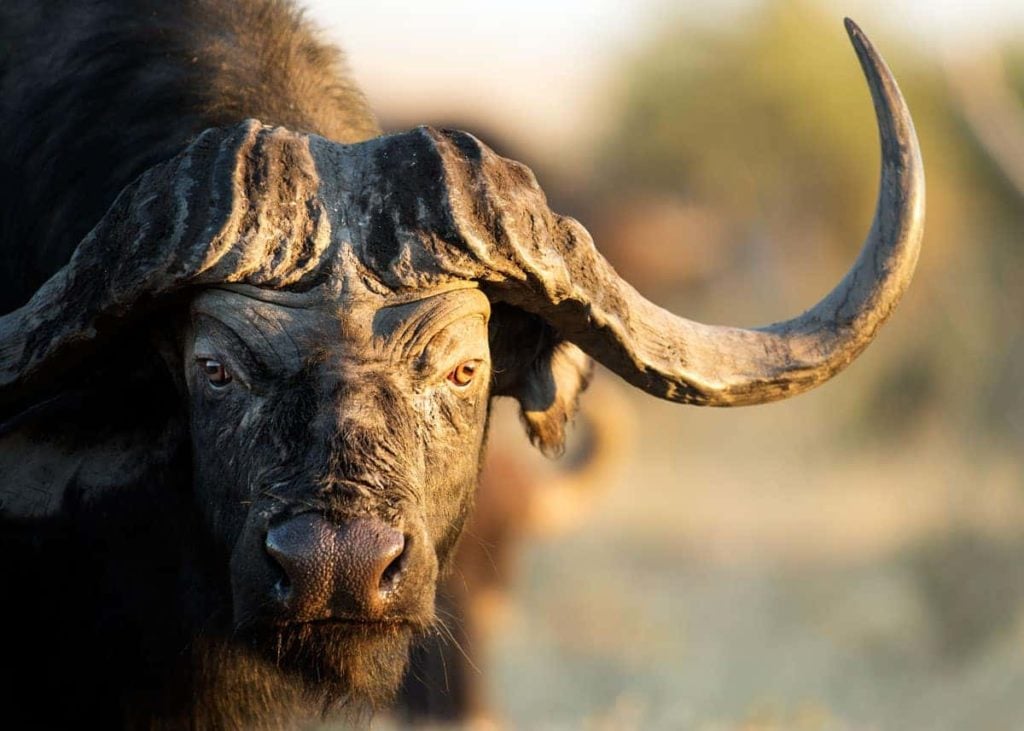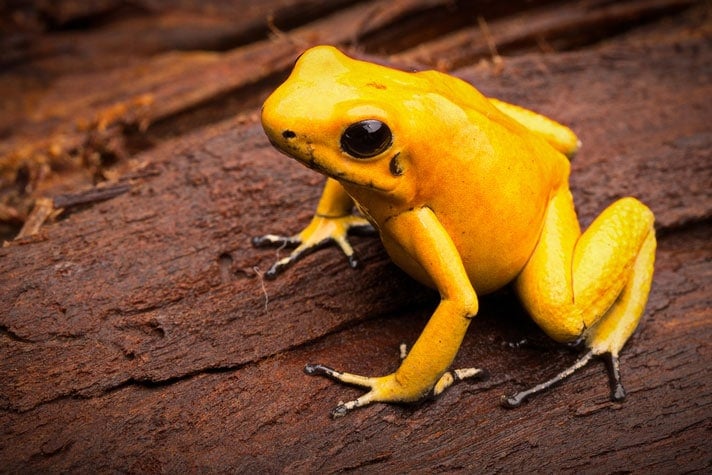5. Cape Buffalo
Cape buffaloes are found in sub-Saharan Africa and are a relatively mild species when left alone. They prefer to travel in massive herds to graze in early-morning and late-afternoon hours or to gather around watering holes to stay hydrated. However, when they scare they can create a massive, single killing machine. They are responsible for killing more hunters on the continent than any other creature. He looks pretty intimidating, too, doesn’t he?

4. Cone snail
These little creatures are found in the warm waters of the tropics and they instantly recognizable for their highly prized, brown-and-white marbled shells. They tend to live in shallow depths closer to shore, near coral reefs and rock formations and beneath sandy shoals. While they may seem innocent enough, they maintain ‘teeth’ that contain a complex venom known as a conotoxin, making them one of the most poisonous species of snails.

3. Golden Poison dart frog
“Golden Poison” doesn’t sound good to us! The poison dart frog is part of a diverse group of brightly colored frogs living mainly in northern South America. While only a few of the species are particularly dangerous to humans, the most deadly — the golden poison dart — inhabits the small range of rain forests along Colombia’s Pacific coast. They can grow to around two-inches long, and its poison — called batrachotoxin — is so lethal a single frog can kill upwards of ten men.

2. Box jellyfish
Stay away from these little buggers. Often found floating in the waters north of Australia, these transparent, nearly invisible invertebrates are considered by NOAA to be the most venomous marine animal in the world. Their namesake cubic frames contain up to 15 tentacles at the corners, lined with barbs. Known as nematocysts, they contain toxins that simultaneously attack the heart, nervous system, and skin cells.

1. Puffer fish
You may see this being served a restaurants, but the pufferfish is anything but delicious unless prepared correctly. Pufferfish, also known as blowfish, are located in tropical seas around the globe. They remain one of the most dangerous marine animals as their neurotoxin — called tetrodoxin — is found in the fish’s skin, muscle tissue, liver, kidneys and gonads.

